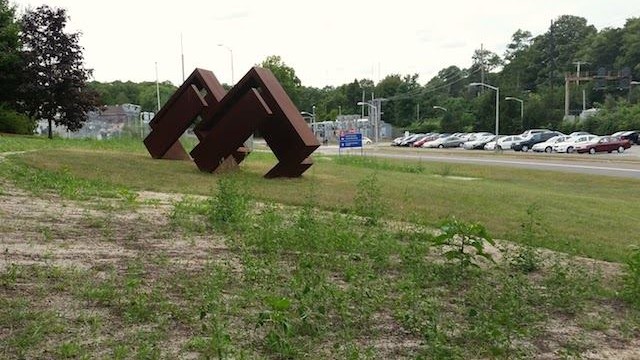The West Side Meadow cost more than $18,000 to install but will reduce carbon emissions on Stony Brook University’s campus. Photo by Aishwarya Vijendran. (Sept. 12, 2014)
By Janelle Clausen
The Office of Sustainability transformed 16,143 square feet of lawn during the summer into the West Side Meadow, a second native species meadow on campus that is promised to reduce maintenance, emissions and runoff.
James O’Connor, the director of sustainability and transportation operations, said the newest meadow cost about $18,000 to install, but it will save over $5,000 a year in maintenance cost. Grass lawns are mowed three hours every week for seven months a year. The meadow will also reduce 7,500 pounds of carbon dioxide emissions due to reduced maintenance costs and diesel consumption, he added.
Although the installation seems expensive, O’Connor said, the cost wasn’t as high as other sustainability projects on campus such as the bike-sharing program on campus and other transportation needs.
“The cost isn’t as high as a major retrofit of lights or taking a look at transportation,” O’Connor said. “Those installations are more expensive, but that doesn’t mean it diminishes the effect on the university community.”
Visibility and availability of space were two main factors in its location choice, he added. The meadow, on the corner of Gym and Circle Road, is flanked by a commuter lot and the Stony Brook Railroad where there are hundreds of parking spots.
“It’s in a visible part of campus,” O’Connor said, adding that he was excited over the location’s effect on sustainability awareness. “It’s causing people to ask questions and generate awareness about the importance of sustainability, especially when it comes to irrigation.”
The West Side Meadow will have additional environmental effects, including diverting more rain in comparison to grass due to the meadow’s variety of native plants. Its increased surface area and other factors will cause it to act like a “sponge,” O’Connor said.
“As the installation becomes mature, you’ll see that the quantity of rainwater runoff decreases because of a multitude of things,” O’Connor said.
The West Side Meadow is modeled off the now fully developed North Entrance Meadow, an 30,000 square foot area of campus dedicated to plant species native to Long Island and the northeastern United States started in 2012. It cut nearly 10,000 pounds worth of carbon dioxide, rarely needs irrigation and withstood last summer, during which parts of Suffolk County saw 14 inches of torrential rain.
But unlike the North Entrance Meadow, the West Side Meadow hasn’t fully developed. Few flowers have bloomed and many plants have yet to start growing.
“”I honestly just thought somebody forgot to mow it,” said Jason Lateko, a tennis coach who recently joined the university.
The meadow currently needs weekly irrigation in order for proper development to begin. But if the North Entrance Meadow, which bloomed the spring after it was first planted, is any indication of what will happen here, students can expect to see a blossoming West Side Meadow in the next few months.


